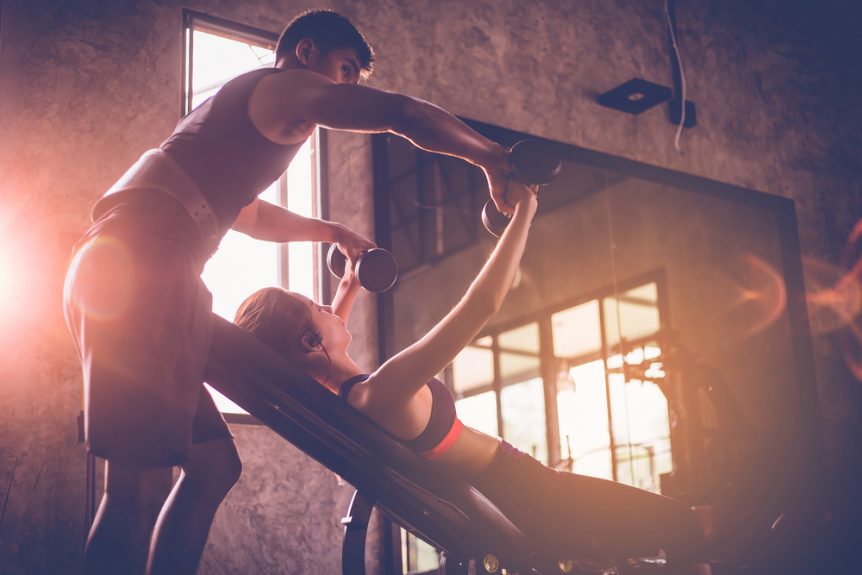A career as a personal trainer can look very different depending on where you take the profession. For example, you might work from your own home gym or travel to various client’s homes throughout the day. Or, you might work at multiple gym locations, which may also require some travel.
However you end up pursuing the profession after your time at Bryan University, you’ll likely need to invest in some equipment of your own. That way, you always have what you need to provide exceptional service to your clients.
What exercise equipment do I need as a personal trainer?
If you want to be able to give your clients the best personal training experience possible, you’ll need to have the following exercise equipment at your disposal. Although you won’t use all of this equipment every day on the job, having easy and quick access to it will allow you to provide extensive and individualized programming for each client as they progress through their program objectives.
- A kit bag
- A stopwatch
- A balance ball
- Medicine and slam balls
- Slip plates
- An aerobic step platform
- A skipping rope
- VIPR (if you don’t have access to a barbell)
- Battle ropes
- Chalk
- A kettlebell and dumbbells
- Resistance bands
- Exercise mats
- Marker cones
- A foam roller
What tools do I need to be successful as a personal trainer?
- First aid kit: You should always have this on hand, even if the gym(s) or other locations where you work have one too.
- Client log book: You’ll want to have one primary location where you store all your client information, such as their current program details, the progress they’ve made, special needs or requirements they have, etc. That way, you’re always up-to-date on what your client needs from you and how you can best help them reach their goals. Of course, online tools and apps make your client log book secure, mobile, and accessible. Make sure to guard your clients’ information against breaches and hacks to keep your clients’ information private.
- Consultation history: You should keep any consultation forms your clients fill out upon signing a contract with you. That way, you’ll have access to all the information you need to create effective and safe programs. Again, there are electronic ways to do this.
- Blood pressure cuff: If you have clients with high blood pressure, being able to take an accurate reading is incredibly important.
- Wrist straps and lifting straps: Many clients may experience wrist pain while doing push ups or other exercises or they get hand sores while lifting. Wrist and lifting straps can provide support and comfort and help prevent injuries. These are also easy to store and carry in your kit bag.
- A body fat caliper: Smart scales aren’t always the most accurate way to measure body fat. Carrying a body fat caliper with you in your kit bag will give you the ability to accurately provide this important service for your clients.
- Personal training software: Many personal trainers use a software of their choice to stay organized, keep clients motivated, and track clients’ progress easily.
Related post: Vital Tools You Need For Your Exercise, Nutrition and Health Promotion Career
How do I start working toward a rewarding career as a personal trainer?
Our Personal Trainer Diploma and Exercise Specialist pathways both allow students to prepare for rewarding careers as personal trainers. Please call Bryan University toll-free at 1-855-862-0755 or enroll now to begin your journey!


